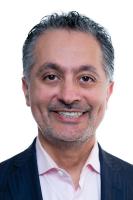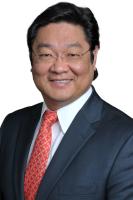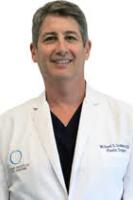Rhinoplasty – Nose Reshaping
Overview
 Nose reshaping surgery (rhinoplasty) is one of the most common cosmetic procedures. In the early days of rhinoplasty, surgeons universally shaved down the bone, removed cartilage, and gave everyone a “cute” upturned nose. Today, people are interested in a nose that fits their personality as well as the unique proportions and features of their face. They want a natural look that does not look like a “nose job”.
Nose reshaping surgery (rhinoplasty) is one of the most common cosmetic procedures. In the early days of rhinoplasty, surgeons universally shaved down the bone, removed cartilage, and gave everyone a “cute” upturned nose. Today, people are interested in a nose that fits their personality as well as the unique proportions and features of their face. They want a natural look that does not look like a “nose job”.
At Summit Health, rhinoplasty is highly individualized. We take into account the entirety of your face and make recommendations as to what will look best on you. For example, a celebrity’s nose might look great on his or her face but not nearly as attractive on your face. This is why we offer imaging technology so that you can see how different types of changes would look on your face from both a front view and in profile.
The results of rhinoplasty can be subtle or dramatic, depending on how you want to look. The best outcome is a natural-looking nose that is well-balanced for your face.
We also approach rhinoplasty differently in men and women. Masculine and feminine facial structures differ a great deal, so it is important that your plastic surgeon has experience in providing successful rhinoplasty results for both sexes. Rhinoplasty can do many things to improve the look of your nose, such as:
- Reshape your nose, whether across the tip or the bridge
- Reduce the size of your nose, making it shorter or narrower
- Decrease the size of large nostrils
- Increase the size of your nose if you feel it is too small or too narrow
- Change the angle between the nose and upper lip
- Correct birth defects or injuries, including a bump on the bridge of your nose
- Straighten a crooked nose
- Correct indentations on the nose
- Create balance/symmetry between your nose and other facial features
- Improve breathing problems by correcting a deviated septum
“I went to Dr. Hyans for a nose job in 2003. My ten-year anniversary is coming up; crazy to think it's been a decade. Very pleased with my results. Getting a nose job was a lifelong dream of mine, so for a 17-year-old girl, I kind of looked to him as my savior…. What struck me most, and what I will always remember is that he seemed so excited and genuinely happy for me that I was finally getting a nose job.”
Ready to get started?
In some cases, a chin implant may be preferable to rhinoplasty or be desired in conjunction with nose surgery. If your chin is weak, enhancing that area may allow the nose to immediately look more proportionate with the rest of the facial features.
If you have breathing problems, our plastic surgeons can correct simple septum issues with a septoplasty procedure during rhinoplasty. For more complex breathing problems, we will refer you to our ENT physicians at Summit Health. We frequently do the cosmetic and functional rhinoplasty surgeries in conjunction with one another while working with our ENT colleagues. Often, if the rhinoplasty surgeries are combined, the functional portion of the procedure is covered by insurance.
Some patients choose to have another procedure at the same time as their rhinoplasty or a full facial rejuvenation to take care of several issues at the same time. It is less costly to combine procedures, and they can usually be done concurrently so that you have only one episode of anesthesia and one recovery period.








